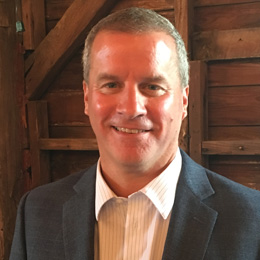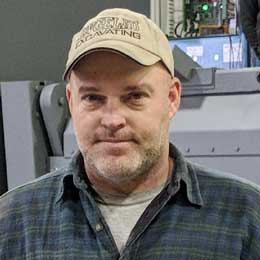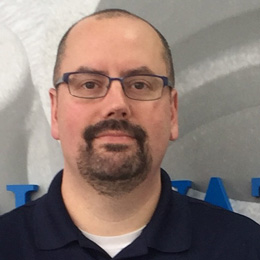Save Time, Weight & Money WITH METAL 3D PRINTING
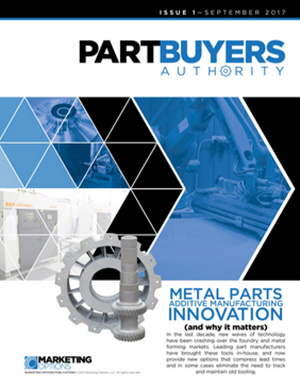
JACK LAUGLE President, INNOVATIVE CASTING TECHNOLOGIES
Published October 2017, Part Buyers Authority
Reprinted with permission from Part Buyers Authority
3D metal printing an additive manufacturing technology that is revolutionizing the design and prototyping world especially in industries such as truck, transportation, medical parts, agriculture, aerospace and motorsports. With increasing application of the technology, there is potential for metal additive manufacturing to become an integral part of every engineer and designer’s toolkit. It is complementary to traditional subtractive methods - like CNC machining as well as the traditional foundry.
Additive Manufacturing (AM) is a process used to create three-dimensional parts from a digital file. It involves building up thin layers of material to create complete, complex parts that are difficult to produce using traditional methods such as casting, forging, and machining. 3D metal printing brings new design possibilities to the table, including being able to combine multiple components in production, minimize material use and reduce tooling costs.
THE TECHNOLOGY
Our Renishaw Metal 3D printing system can produce parts up to: 12” x 12” x 12” in these alloys: Aluminum, Stainless, Titanium, Inconel and numerous tool steels. Currently the industry does not support any of the iron based (gray iron/ductile iron) materials. 3D metal printing is ideal for parts that are in the development stage where modifications and redesigns are part of the design process. 3D metal printing allows engineers to have creative freedom during the production process versus other prototyping methods, saving you time and money.
One of the most recognized benefits of additive manufacturing is that it reduces the weight of the part significantly. Parts can be as much as 65 percent lighter than traditional, subtractive manufacturing methods, making them especially ideal for industries that require lighter weight parts to reduce fuel consumption such as aerospace and transportation.
GET PARTS FASTER!
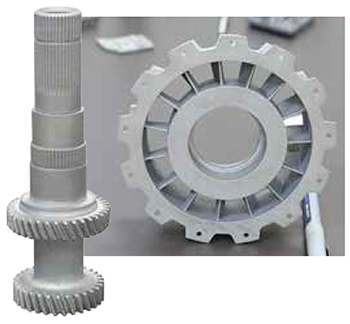
3D metal printing is where parts and prototypes are needed quickly. Other benefits of 3D metal printing:
- Speeds up and simplifies your build process
- Produces complex parts you can’t get with traditional manufacturing
- Offers new design possibilities
- Minimizes material use
- Reduces tooling costs
- Combined multiple components in production
- Parts maintain strength and rigidity
- Improves production cycle times
- Reduces material waste
- Reduces part weight
- Saves you time and money
Part design, complexity, alloy, surface finish, and volumes will dictate the best option for your part. That’s why working with a foundry that offers choices in production is often your ideal situation. Foundries that can keep your production in-house from the 3D printer to a high run production in their sand casting operation will serve many casting buyers well.
WHY 3D METAL PRINTING
Organizations using metal parts can make a thorough analysis of current product and production lifecycles to reveal gaps where metal additive manufacturing could prove advantageous - in reducing development time, production steps, costs and use of material.
- Automotive
- The motor sport industry has adopted metal additive manufacturing to produce customized parts such as cooling ducts.
- Speed of turnaround of prototyped parts is key to maintaining a competitive advantage. Functional metal parts can be rapidly produced and performance tested.
- Lighter parts can contribute to greatly reduced fuel consumption for cars and trucks.
- Aerospace
- Metal additive manufactured parts are used in the aerospace industry for functional parts including engine turbine blades, fuel systems and guide vanes.
- The topological optimization of parts can improve functionality and reduce weight.
- Lighter parts can contribute to a lighter aircraft and greatly reduce fuel consumption.
- Healthcare
- The medical orthopedic industry benefits from manufacturing complex geometries and structures in high grade materials such as titanium.

While 5-axis CNC machines are capable of positioning tools into tight, hard-to-reach places, there are still features which cannot be accessed by these tools. This isn’t the only concern; a feature must have enough strength and rigidity to resist the forces of a milling tool. Failure to account for this can lead to poor quality surfaces, or even damage to the part. These factors may limit the manufacturing of the technician’s design to something that only closely resembles what is required, rather than accurately reproducing it. Most often this will lead to manual finishing of the part.
Metal additive manufacturing can be used to help improve production cycle times and productivity in injection molding. Metal mold tools used for injection molding contain channels to cool the mold. With conventional tool-making methods, these cooling channels are drilled into the tool in straight lines. Metal additive manufacturing allows cooling channels to be designed and built to perfectly contour the mold. This helps to improve cooling performance, extend the life of the mold, and reduce waste.
Modern technologies enable us to create both models and secondary tooling in a matter of days or even hours. Prototype models offer the chance to check form, fit, function, and evaluate the new product design visually.
SAVE TIME
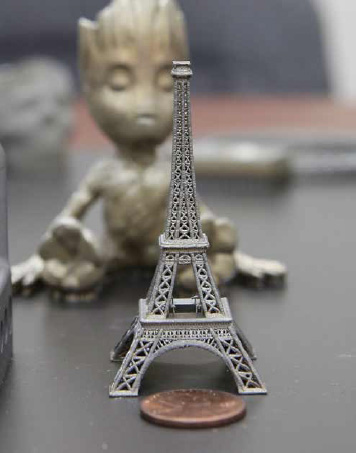
3D Metal Printing significantly streamlines traditional methods. It brings design and innovation to the forefront. Metal additive manufacturing allows metal parts to be built without the need for traditional tooling and with few limitations in geometry. Modifications and redesigns are part of the designing process, but this method allows engineers to have creative freedom during the production process, saving time and money.
SAVE WEIGHT
3D Metal Printing means freedom from the normal manufacturing constraints. Parts can be easily made hollow or filled with lightweight but strong lattice work. Parts are built with only as much material as needed to support the mechanical and strength requirements, leading to lighter-weight finished pieces and reductions in material consumption.
SAVE MONEY
The old adage is that “time is money.” Shorter time between design and manufacturing, faster iteration of part designs, and reduction in startup delays all translate directly into significant savings. Combine that with lower material usage and less infrastructure investment. This is a recipe for massive cost reductions over the long term.
There are a lot of advanced manufacturing methods entering the market from CAD and CAM equipment, to advanced automation in producing castings, core boxes, and finished machined castings. All of these newer technologies complement and make a traditional foundry able to reduce your overall tooling costs and getting your high quality complex parts to market faster.
Newer technologies are being deployed in our foundry every year. How to know the capabilities of your foundry? That’s simple, just do an on-site visit. Today’s foundries are a far cry from foundries of years past. As an early adopter of many of these advanced automation technologies, there is a lot to be learned from a tour about the options in the production of your part. The more you know – the more you can specify the best technology for your part, and the more you can save.
